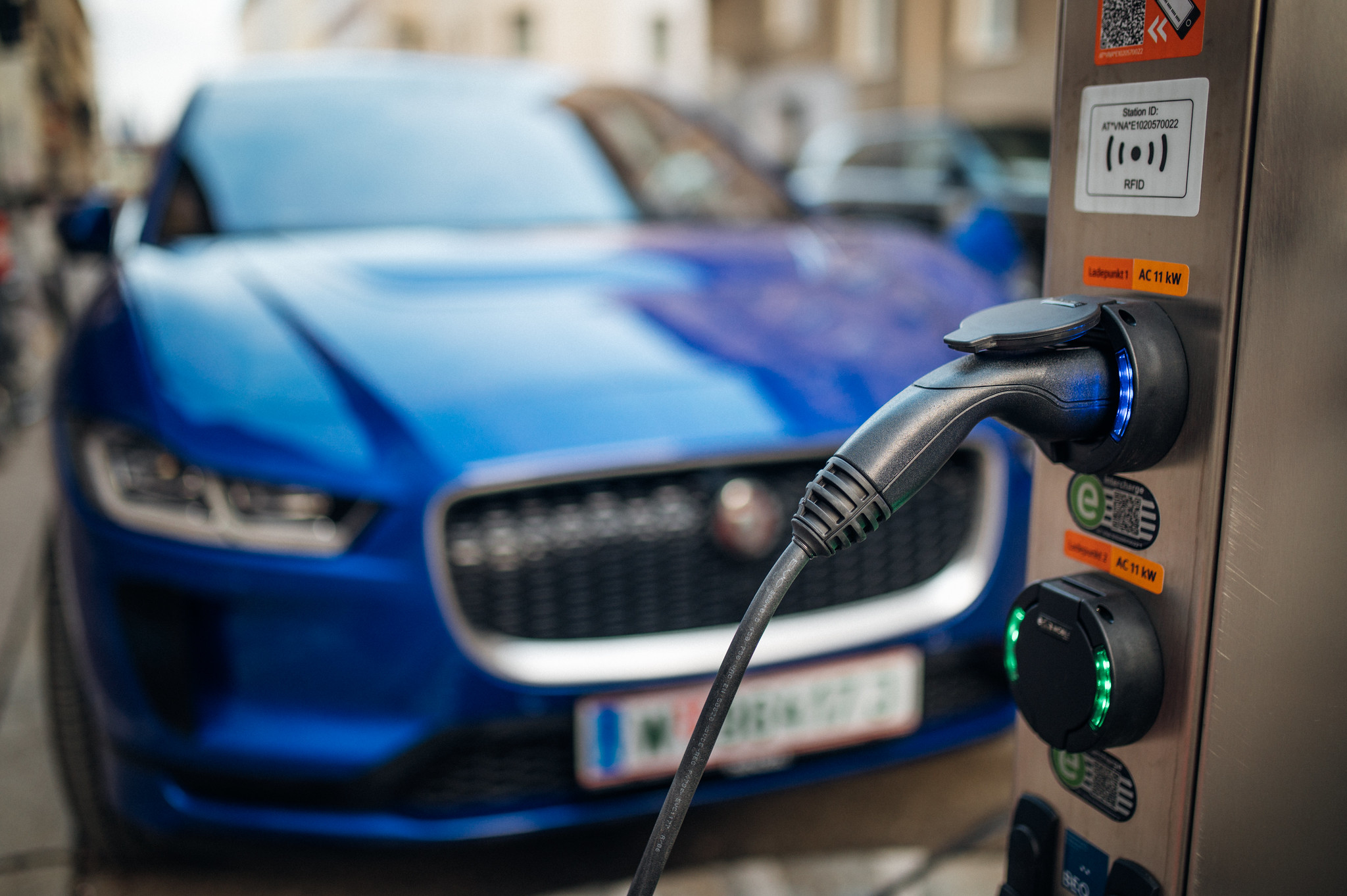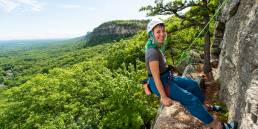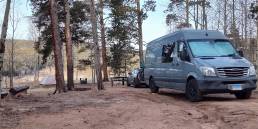Apparently, we have a lot of thoughts about parking lots. We’ve written about parking lot overcrowding in the Whites, trails in Franconia Notch that avoid packed parking lots, and even how to après in the parking lot after a fun day in the mountains. Well, now we’re back with a new parking lot topic: trailheads need more EV charging stations. Hear us out on why this is our most electric parking lot opinion yet!
Transition to Electric Cars
Once an afterthought, the market for electric vehicles (EVs) and hybrid electric vehicles (HEVs) has exploded over the last ten years. This growth is expected to continue over the next decade—according to one projection by J.P. Morgan, 30% of new vehicle sales in 2025 will be EVs and HEVs while others project that by 2030, EV sales alone could be 40-50% of all new vehicles.
Given this growth, you probably know somebody who’s already driving to the mountains in a vehicle that is either fully (in the case of an EV) or partially (in the case of an HEV) powered by an electric motor that draws electricity from a battery and is capable of being charged from an external source. Maybe you have even driven in an EV or HEV yourself.
If you fall into the latter group, you’ve probably also experienced “range anxiety,” the concept of not knowing (at least for an EV) where you’ll find your next charge. You’re not alone, either—the country’s charging network is perhaps the biggest impediment to even faster EV adoption in the United States. Simply put, there aren’t enough charging stations. And a majority of the charging stations that do exist aren’t the high-speed DC chargers (so-called Level 3 chargers) that can charge an EV’s battery in 30-45 minutes. Rather, most charging stations are Level 1 (a typical wall outlet; it charges the vehicle at about five miles of range per hour) or Level 2 (240-volt outlets like that used on a home dryer outlet; it provides about 25 miles of range per hour).
While we’re on the topic of range and range anxiety, it’s also worth mentioning that driving in cold weather saps an EV/HEV’s charge a lot faster. While we get the science (sort of), it’s still a practical problem, particularly if you are trying to take your EV or HEV to recreate in the Whites, the Greens, or the Adirondacks, where winter conditions can start in October and end in April.

Infrastructure to Accommodate the EV Transition
We have a suggestion to help solve these problems: install charging stations in high-usage parking lots in mountain playgrounds across the Northeast. This, we believe, will help build up the regional charging station network and minimize charging speed concerns. Think about it for a minute—trailheads across the region are often the midpoint of a car trip, where outdoor enthusiasts park and leave their vehicles for several hours at a time. So, while recreationists are hiking, climbing, skiing, or mountain biking, there’s ample opportunity to recharge their vehicle batteries for the drive home.
To us, this seems like a win-win—recreationists get to recharge their vehicles while they are out recreating, and certain high-usage parking lots gain an additional revenue-generating source (charging stations). And we aren’t the only ones suggesting this type of infrastructure development either. Check out the Waterville Valley’s Master Plan, where the Waterville Valley Planning Board notes the lack of nearby EV charging stations, describes the stations as “increasingly critical for resort destinations like Waterville,” and recommends locating them at “recreation destinations” in the region. Killington, meanwhile, has already done just that, installing 45 EV chargers across the resort to become, at least as of 2018, the largest EV charging hub in the Northeast.
Lots With Charging Stations
Based on our decades of parking in high-usage parking lots across the Northeast, we can say pretty comfortably that most crag and trailhead lots lack the infrastructure we’re suggesting is necessary to accommodate the next generation of transportation. Indeed, in the White Mountains (our main stomping ground) we’ve only found charging stations at two trailhead lots—Pinkham Notch and the Highland Center. Both are run by the Appalachian Mountain Club and their charging stations are regularly in use when we pass by. (For additional options in the White Mountain region, check out this list.) Other heavily frequented lots, like those at Rumney, Lincoln Woods, and Cannon, seem like viable candidates for this infrastructure.
New York, meanwhile, has taken a slightly different tack—it recently started installing charging stations at some campgrounds in the Adirondacks (Meadowbrook Campground in Ray Brook and Frontier Town Campground in North Hudson). So, too, have South Carolina and Colorado, with officials in those states projecting that the installations—sponsored by EV truck maker Rivian—will generate additional revenue for depleted state outdoor recreation budgets. All this, we think, is a fantastic idea, particularly since many car-camping campgrounds already have an electric infrastructure that can readily accommodate Level 1 charging. Combining options like this with additional charging stations at high-usage trailheads will go a long way toward ensuring a robust network as EVs and HEVs become even more prominent.
The benefits are EV charging stations aren’t just limited to car owners, either. There are lots of potential regional benefits as well. A big one is the jobs associated with the development of parking lot infrastructure. Another is the revenue generation source that traditionally boring parking lots can become. And, of course, EVs and HEVs are quieter, better for the environment, and reduce our global dependency on fossil fuels—all things that are key for regions in the Northeast where outdoor recreation tourism is a major revenue generator.
If you made it this far, we hope we’ve electrified you with your latest parking lot opinion. Now, on to the lots.
Tim Peck and Doug Martland
Tim and Doug met long ago at the Eastern Mountain Sports in Canton, Massachusetts. Bonding over a love of slick Quincy Quarry granite, White Mountain sufferfests, and scheming up adventures while folding tee-shirts, today Tim and Doug collaborate to write about their favorite outdoor activities and occasionally get nostalgic about tee-shirt tables.




